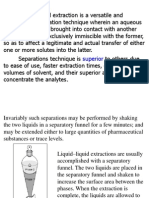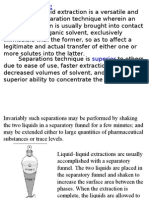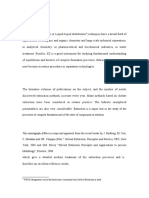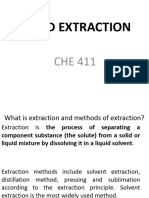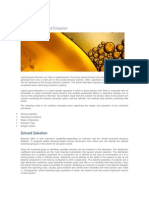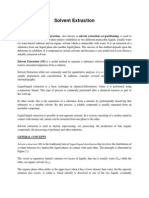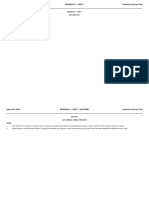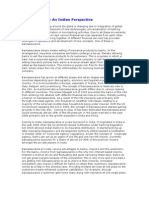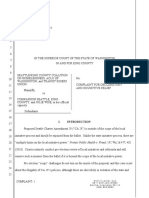0% found this document useful (0 votes)
56 views14 pagesSolvent Extraction
Separation methods are crucial in analytical chemistry for removing impurities before quantitative analysis, with classical and instrumental methods being the two main approaches. Solvent extraction, a key technique, separates compounds based on their solubility in two immiscible phases and is widely used in various industries, including metallurgy and pharmaceuticals. The effectiveness of solvent extraction depends on factors like solute solubility, selectivity, and the properties of the chosen solvent.
Uploaded by
tukurhafsat3Copyright
© © All Rights Reserved
We take content rights seriously. If you suspect this is your content, claim it here.
Available Formats
Download as PDF, TXT or read online on Scribd
0% found this document useful (0 votes)
56 views14 pagesSolvent Extraction
Separation methods are crucial in analytical chemistry for removing impurities before quantitative analysis, with classical and instrumental methods being the two main approaches. Solvent extraction, a key technique, separates compounds based on their solubility in two immiscible phases and is widely used in various industries, including metallurgy and pharmaceuticals. The effectiveness of solvent extraction depends on factors like solute solubility, selectivity, and the properties of the chosen solvent.
Uploaded by
tukurhafsat3Copyright
© © All Rights Reserved
We take content rights seriously. If you suspect this is your content, claim it here.
Available Formats
Download as PDF, TXT or read online on Scribd
/ 14











